Transit Takedown: Japan v Korea
Our experience with Trains and Transit in Japan as compared to South Korea!
TRANSPORTATION !
It may just be the social bubble of urban planning geeks I interact with, but I feel like Japan is pretty famous for its incredible, on-time, transit. Certainly, in public dialogue about building bullet trains in the US, like the now all-but-doomed California High Speed Rail Project, the Shinkansen and its famous three-hour trip from Tokyo to Kyoto is held up as an example. Of course, there are now numerous high speed train systems across the world to harken to. In fact, in one recent article I read on the California project, it noted that a full system had been planned, designed, and built in Morrocco in the time the San Francisco to LA route was being planned out. Bullet trains apparently also exist in more than 32 countries today, including such potentially surprising entries as Latvia, India, and Turkey (there are none in operation today in the US).
Still, Japan remains the iconic jewel in the crown for transit systems.
I suppose that is why I was both skeptical and humored when Marco, a ceramics guru and our host during my clay course in Korea, said quite confidently that transit in Korea is better than Japan's. As I write this, I'm being whisked between Kyoto and Tokyo at an incredible 170 mph on a train that leaves between the two cities roughly every 15 minutes. It is clean, comfortable, easy to understand, and on-time. I got to this train from our hotel via a bus that also met all those same criteria. And yet, I'm forced to agree with Marco. Transit in Japan is incredible by US standards (and probably by most of the world's standards). But in a direct comparison between these two countries, I have been given the privilege to travel in over the last two months, it still loses the grand prize to South Korea. NOTE: this is based almost fully on personal experience alone and should not be taken as reliable and accurate assessment of each countries transit system.
Before I dive in too deeply into a comparison, I want to give a brief summary of our experience on transit here and how we've learned to navigate it thus far.
First off, we've ridden buses, subways, light-rail, and high-speed rail since starting our APAC adventure. In Japan, we have found that Google maps (which regretfully works very poorly in Korea as I've discussed previously) is generally a helpful and accurate guide for using various transit to get from one place to another here. Transit is owned and operated by several dozen (maybe more) operators, including big nation-wide players like Japan Rail (of the famous Japan Rail Pass) to local and regional bus companies like Danum, which we rode between several cities on Hokkaido Island.
Many of these systems seem to have directly competing routes and destinations. They also have their own ticketing process, pricing, and branding. One can buy individual paper tickets, day passes, multi-day passes, or reloadable IC cards, depending on the provider. Many providers also offer very specific passes oriented towards foreigners, including the Japan Rail pass (which covers Japan Rail lines and some partners) but also quite a few regional and city specific pass deals. Helpfully, a number of the major providers came to an agreement in the 1990's to create interoperability across 10 of the major companies' IC cards, meaning if you buy one of them, you can tap that same card to get onto most transit (local buses, metro, and local trains) in Kyoto, Osaka, Tokyo, etc.
Round ONE: Ease-of-use
Despite this interoperable IC card, we have generally been a bit confused when trying to navigate between the various transit companies and lines and especially when were trying to determine if the Japan Rail Pass or other regional passes would be a better deal. This quickly takes us to Round One of the comparative face-off between Korean and Japanese train systems: ease of use. With the aide of a quality app (NAver in Korea, Googlemaps in Korea) and in-station signage, we generally found both systems fairly intuitive for daily ridership. Both countries have critical directional and destination signage in English as well native characters, and have similar approaches to the turn-style payment and direction to the correct platform, train or car. In both countries, most (but not all) bus stops are well appointed and share real-time information on bus location and arrival timing (although Japan's stops are decidedly more "retro" in appearance). But Japan, with its numerous providers, is a bit more confusing when determining routes, cost, and ticket purchase. Along the research on foreign pass options making our heads spin, we often didn't know when our IC pass would or wouldn't work to get on a specific transit operator. Most often it did, but several times we were turned back to go purchase a separate ticket.
In contrast, in Korea, with exception of a few inter-city buses, it felt transit was one unified national system. Just Korea rail, or Korea bus, no company names. And the equivalent re-charcheable transit card worked across all. Notably, South Korea is a significantly smaller country overall, and operating a nationwide system and therefore probably easier to pull off. Still, although not a hugely different experience, once you start to get familiar with it, Korea has the edge on this one.
Round TWO: Accessibility
Our second face-off category is accessibility. For my purposes, accessibility means the simple concept of how easy it is to get to the places you want to go, when you want to go, by transit. Most transit experts would likely parce out frequency (how frequently each line runs) and reliability (how often they run on time), and the system's geographic coverage, but for the sake of this comparison I'm bundling all these things together.
Both systems' major cities (aka Tokyo, Seoul, Busan, Kyoto) had absolutely incredible accessibility. You could get anywhere by subway or bus at any time and each train or bus would come every 15 minutes or less (usually less than 5 minutes). However, things got a bit more interesting in smaller towns across each country. Let's compare the outdoors and national park jump-off towns of Sokcho (Korea) and Sapporo (Japan). Neither city has a metro system and so the only transit is available by bus and both cities' frequency of said buses were lower, with many buses running closer to every 30 minutes. However, Japan's older, aging infrastructure, takes it down here. In attempting to get from Sapporo to neighboring town, Jozankei, we experienced a bus that was more than 45 minutes late in each direction; the result of pretty serious roadway reconstruction efforts. Meanwhile, the bus from Sokcho into Seoraksan National Park encountered pretty stop and go traffic, but the schedule seemed to account for this and so our bus still arrived at our stop right when it said it would. Obviously, these frequencies are not scientific, or data based at all, just the observations of one traveler at one point in time, and so is basically this whole article is so take it all with a grain of salt!
Round THREE: Cost
South Korea takes this one by a mile. While Korea cost of living seems to be just a smidge lower overall than Japan's, the cost of transit is dramatically lower. Consider the bullet train from Seoul to Busan compared to the train from Kyoto to Tokyo. Both trains take just over two hours and provide a similar experience. The former however, cost us $65 per ticket while the later was just over $100. The price differential is even higher on local transit. The average in-city bus ride in South Korea was between 15 and 30 cents per ride. Bus rides in Japan varied more widely by the particular provider but tended to be more like $1-$3 per ride. KNOCKOUT. South Korea wins again!
Again, in the end both countries provide excellent transit service. And I do give Japan credit they serve a larger geographic area across multiple islands, while South Korea is one small and compact peninsula. Still, it was a fun little non-scientific experiment comparing between these two highly transit-proficient countries.
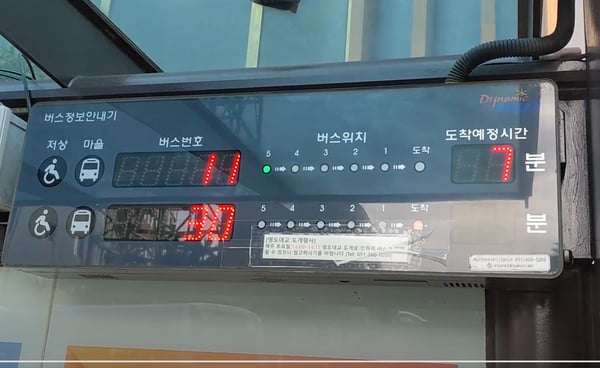

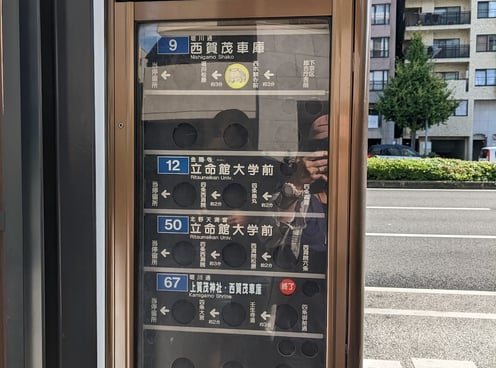

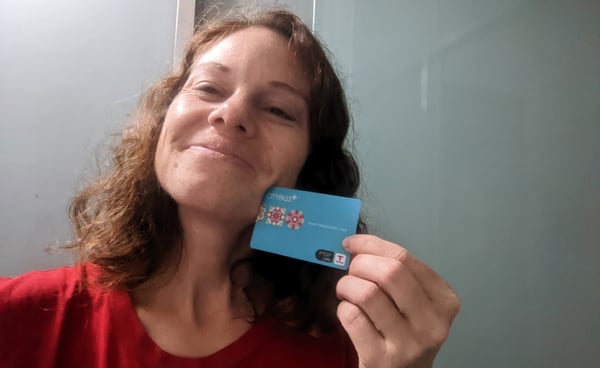

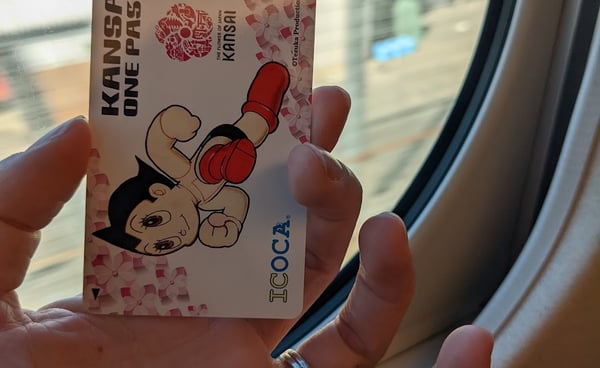

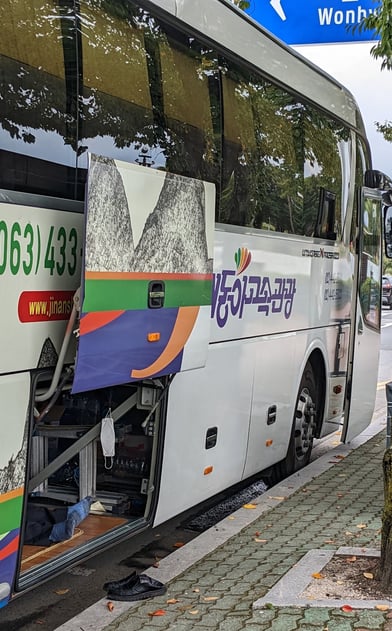

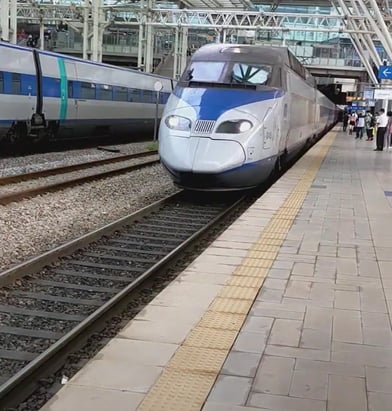

Above: The KTX from Seoul to Busan. Below: I was amused to see this multiple times: Korean drivers like to nap in the baggage birth of their bus between trips. Looked pretty comfortable actually.
The transit card comparison. The first "TMoney" card worked throughout Korea on almost every form of transit except a few intercity buses. The Kansai One Pass is one of dozens of available IC cards to choose from in Japan, each with different coverage areas. Luckily, an inter-region agreement between companies meant this one worked in Osaka, Kyoto and Tokyo, though not Hokkaido Island and not any intercity buses or trains.
Both Korean and Japanese bus stops often have live updates on bus status. However, the South Korean stops have digital readouts, while the clearly older Japanese displays use flip markers.
